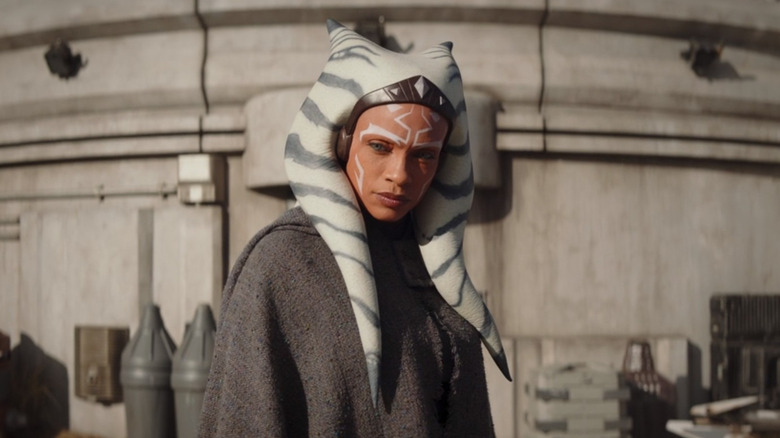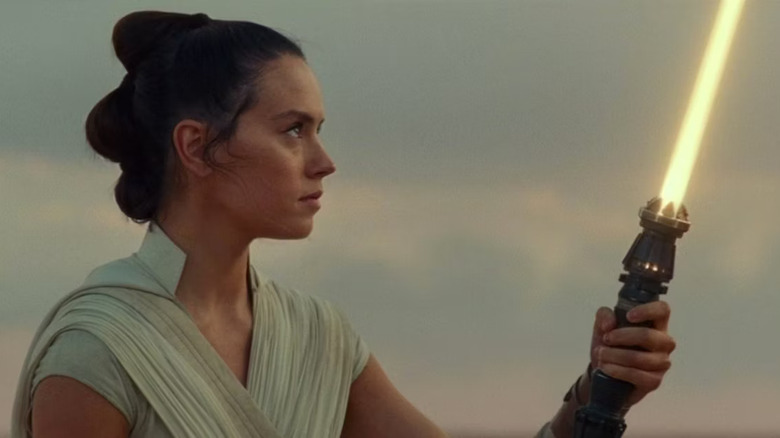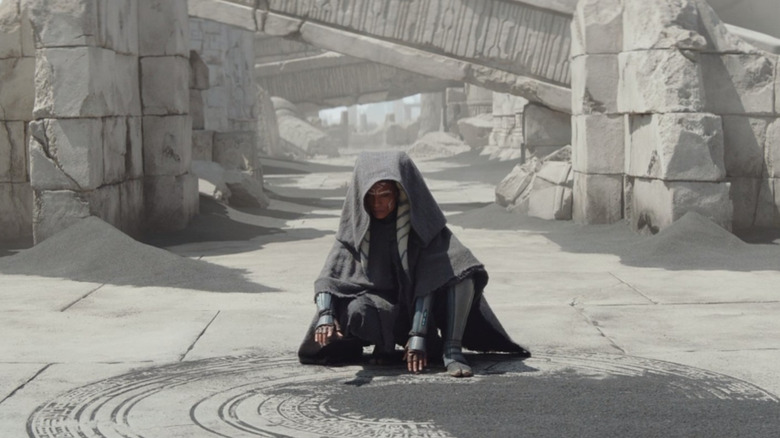Ahsoka's Rare Force Power Is An Infamous Star Wars Ability
If you've been following her story since "Star Wars: The Clone Wars," you know that Ahsoka Tano is quite strong in the Force. She's a fierce lightsaber combatant, an astute investigator, and a nimble acrobat when the moment calls for it. And in the first two episodes of her new live-action Disney+ show, she shows off another rare Force power that only a select few Jedi have ever displayed.
The ability in question has many names. The technical title in the canon is psychometry, though it's also referred to as "sense echo," "Force echo," and several other monikers. Regardless of what you call it, the power is essentially the same. It allows those who possess it to sense the history of physical places and objects, seeing and hearing glimpses of their past. For "Clone Wars" fans, psychometry may conjure images of Quinlan Vos, the Jedi maverick who embarks on a tragic romance with former Sith assassin Asajj Ventress in "Star Wars: Dark Disciple." For "Star Wars" gamers, "Jedi: Fallen Order" and "Jedi: Survivor" protagonist Cal Kestis is probably the first character to come to mind. His psychometric powers play a pivotal role in both games, and they make him a unique kind of Jedi.
Now it seems that Ahsoka has the ability as well. Though it's canonically innate, meaning that it only appears in some Force users and can't be taught, Ahsoka never displays the ability in either "Clone Wars" or "Star Wars Rebels." But then, she's not the only instance of psychometry manifesting at an older age.
Rey also uses psychometry in the Star Wars sequels
In addition to Quinlan Vos and Cal Kestis, the other prominent Jedi to use the Force echo in canon is none other than Daisy Ridley's Rey. In "The Force Awakens," her innate predilection for psychometry results in a powerful connection to Anakin Skywalker's lightsaber. However, the reason why Rey sees and hears flashes of the weapon's history isn't explained within the film — an apparently intentional bit of misdirection to fuel J. J. Abrams' mystery box.
Since then, canonical source books and encyclopedic "Star Wars" texts have confirmed that Rey possesses psychometric abilities. Some fans have described the power as a convenient retcon, making psychometry a bit infamous in certain corners of the "Star Wars" community, but it does explain several of her more mysterious moments throughout the sequel trilogy. Plus, the Force is a made-up thing in a galaxy far, far away. It works however the story — one that has always been fantastical and relied on convenient plot devices — needs it to.
Regardless, Rey is another instance of how sense echo gives Jedi a unique connection to the Force. Ahsoka uses the ability several times in just the first couple of episodes of her new show, and it should be interesting to see how else it plays into the story.
What Ahsoka's psychometry could mean
As some have said about Rey's psychometry, Ahsoka suddenly developing the technique after never using it before could be seen as a bit of a convenient plot device. It's not something that any of her previous animated appearances — or her cameos in the "Mandalorian" universe — have alluded to. Whether or not that bothers you will vary from viewer to viewer, but it is at least an interesting twist on what Ahsoka can do in the story.
In just the first couple of episodes, she uses sense echo to solve an ancient Nightsister puzzle room and to hear snippets of Sabine Wren's battle with Shin Hati. Since the story of "Ahsoka" seems to be all about ancient Force devices, temples, and legends, there will probably be plenty of additional opportunities for her to put the power to use.
It remains to be seen if we'll get any deeper explanation of Ahsoka's psychometry. Since it's an innate ability, she wouldn't have been able to learn it simply through study, but it's entirely possible that she discovered it sometime later in life and we've simply never seen her use it. Or maybe it's an effect of the time she spends in the World Between Worlds in "Rebels." Time will tell — or not. This is "Star Wars," after all.


